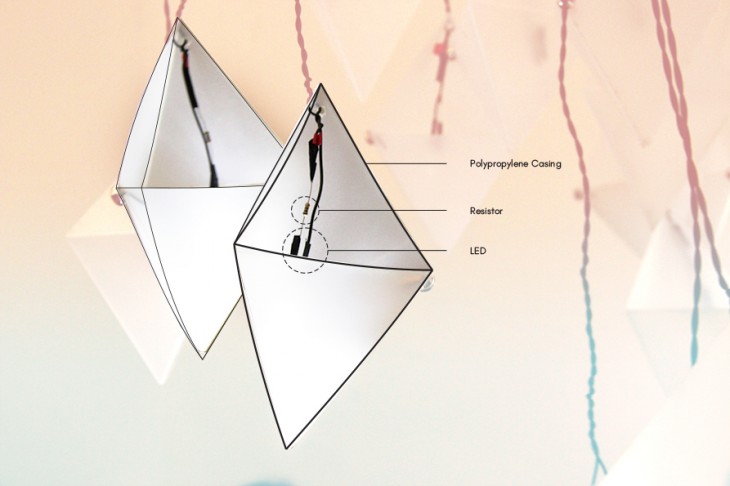
As part of the physical computing seminar, we chose to proceed with an interactive installation requiring no digital coding. Instead, the physical architectural pieces create the circuit, requiring user interaction to complete the circuit and create the intended effect. The installation reinterprets the simply circuit which turns on a LED light. To do this, 10 batteries are broken down into the positive and negative of a power source. To turn the LED on, the positive and negative must come into contact. As a result, movement is required to complete the connection: either wind swelling the stairwell or passersby pushing the modules. With this movement, the positive (attached to the hanging modules) and negative (attached to the stationary wooden brace above) come into contact briefly, turning on the LED. With 100 LEDs, the effect is a shimmering display of soft light flickering along the ceiling.

As passersby walk past the installation and push the modules, the LEDs blink, switching on and off based on contact between the positive and negative of the overhead circuit.

The polypropylene modules weigh down the cables and protect the LEDs. The added weight allows the modules to sway and hit one another safely.

Closeup photo of the polypropylene casings.

The positive and the negative of the power source (battery) are disconnected naturally. As the modules sway or are pushed by passerby, the positive (connected to the module) and the negative (connected to the polywood sheet) come into contact and the LED blinks.

The shimmering LED lights blink on and off with when winds swells the stairwell at night.
Physical Computing – Hanging Analog is a project of IaaC, Institute for Advanced Architecture of Catalonia developed at Master in Advanced Architecture in 2015/2016 by:
Students: Maria-Klairi Chartsia, Utsav Mathur, Ingried Ramirez, Connor Stevens and Lily Tayefi
Faculty: Guillem Camprodon and Angel Muñoz